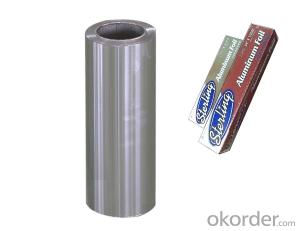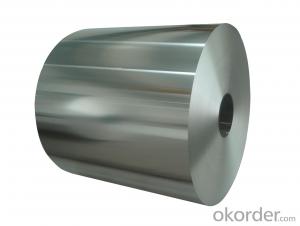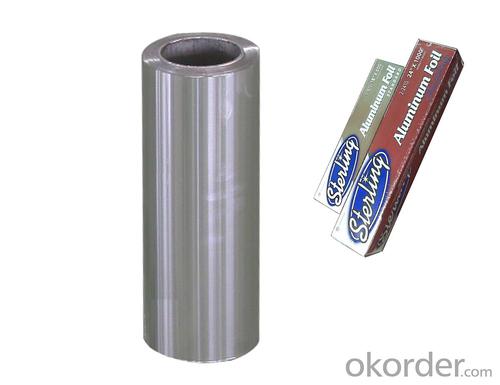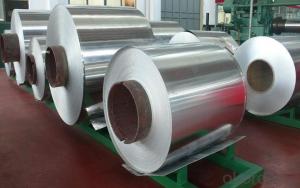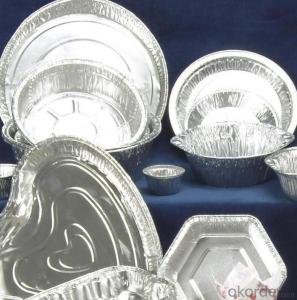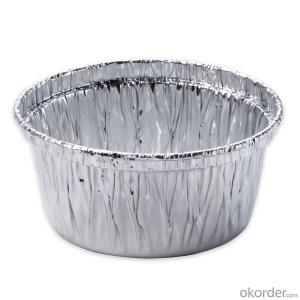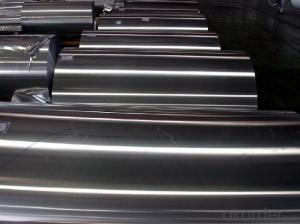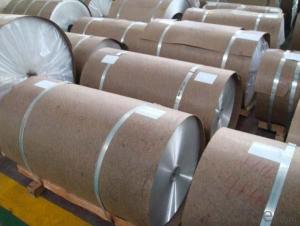Decorative Aluminum Sheets Canada - Household Aluminium Foil FDA Certificate
- Loading Port:
- Shanghai
- Payment Terms:
- TT or LC
- Min Order Qty:
- 1 m.t
- Supply Capability:
- 5000 m.t/month
OKorder Service Pledge
OKorder Financial Service
You Might Also Like
Aluminium Foil are used for Cooking, Storing, Freezing,and wrapping.
Household Aluminium Foil Roll specification:
Material: Aluminium Foil Alloy: 8011 "O"
Thickness: 9micron-24micron is available for different purpose.
Length: 5M--300M As per customer requirement for Houseuse or Foodservice,Catering Use.
Width:250mm--600mm, Regular width: 300mm/450mm as per customer requirement.
Packing: colour box / dispenser box/ Printed PP Sleeve,Bag / Shrink wrap with Printed paper/ Plastic Bubble bag as per customer requirement.
| Description | Household Aluminum Foil |
| Material | Aluminium alloy |
| Shape | Roll |
| Alloy | 8011-O 8006 |
| Length | 3m~300m |
| Usage | Food, ketchen packing storing freezing ,etc |
| Core ID | 28mm 32mm 35mm 38mm |
| Thickness | 9mic-22mic |
| Width | 200mm-600mm |
| Package | Colour box / dispenser box/ Printed PP Sleeve,Bag / Shrink wrap with Printed paper/ Plastic Bubble bag as per customer requirement. |
| delivery time | 25days-28days |
| payment | T/T,L/C |
| quality tolerance | ±3% |
| cerfificate | ISO9001:2000,FDA,SUV,NQA,SGS |
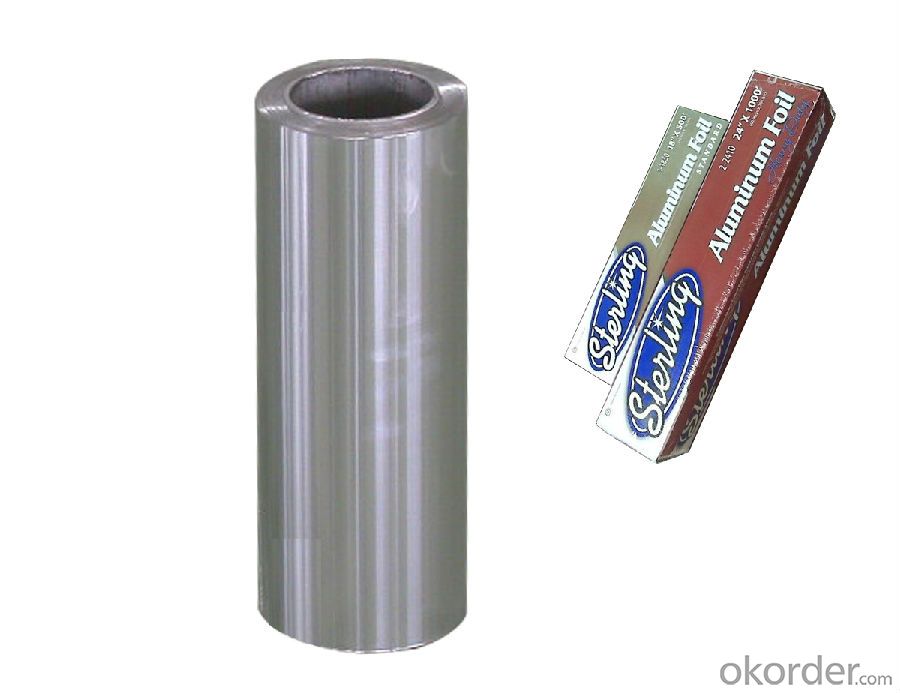
- Q: Can aluminum sheets be used for bus shelters?
- Indeed, bus shelters can utilize aluminum sheets. Aluminum, a lightweight and enduring substance, finds extensive use in construction ventures, encompassing bus shelters. Its exceptional resistance to corrosion renders it apt for outdoor scenarios, where it confronts inclement weather. Moreover, aluminum sheets are conveniently malleable and can be fashioned into manifold forms and dimensions, permitting tailor-made designs and effortless installation. Employing aluminum sheets for bus shelters also entails a cost-efficient resolution as it demands scant upkeep and boasts a prolonged existence.
- Q: Are 101 aluminum sheets suitable for decorative purposes?
- Yes, 101 aluminum sheets are suitable for decorative purposes. These sheets are made of high-quality aluminum alloy, which provides a sleek and polished appearance. They have excellent corrosion resistance and are easy to clean, making them ideal for use in decorative applications. Additionally, 101 aluminum sheets can be easily cut and shaped, allowing for creative designs and customization. Whether it's for interior or exterior decoration, these sheets can be used for various purposes such as wall cladding, signage, furniture accents, and more. With their durability and aesthetic appeal, 101 aluminum sheets are a great choice for adding a touch of elegance to any space.
- Q: To rephrase- in our physics class we found that a simple bar magnet wouldn't attract to an aluminum gutter nail, but our teacher told us to find out whether or not any magnet could lift up the aluminum material. If you answer please give a reference or source, or at least an idea on how to go about researching this, all help appreciated, thanks and God Bless!
- Magnet And Aluminum
- Q: What are the safety considerations when handling and working with aluminum sheets?
- When handling and working with aluminum sheets, it is important to consider a few safety precautions. Firstly, it is crucial to wear appropriate personal protective equipment, such as gloves and safety glasses, to protect against cuts and eye injuries. Secondly, aluminum sheets should be stored and handled in a way that prevents them from falling or causing any crushing hazards. Additionally, it is vital to be aware of the potential for sharp edges on the sheets and take caution to avoid accidental cuts. Lastly, when working with aluminum sheets, it is important to ensure proper ventilation to prevent the inhalation of any aluminum dust or fumes.
- Q: Can the aluminum sheets be used for manufacturing kitchen countertops?
- Certainly! Kitchen countertops can indeed be manufactured using aluminum sheets. Aluminum proves to be a versatile and durable material, displaying resistance against both corrosion and heat. Its lightweight nature and easy workability make it an ideal choice for crafting custom countertops in a variety of sizes and shapes. Moreover, aluminum countertops boast a contemporary and sleek appearance, while also being effortlessly cleanable and maintainable. Nevertheless, it is noteworthy that aluminum is comparatively softer when compared to other commonly utilized countertop materials like granite or quartz. Consequently, aluminum countertops may be more susceptible to scratches and dents. However, with proper care and maintenance, aluminum sheets can serve as a feasible alternative for producing kitchen countertops.
- Q: why does the hardness of 2024 aluminum sheet not increase but decrease after thermal treatment?
- The hardness of 2024 aluminum sheet will decrease after thermal treatment(solution treatment), and it will increase after aging treatment.
- Q: The idea that you can adequately protect yourself from the Alien and government thought transmissions with a 'tin-foil / aluminum hat is just a myth. The correct and real thing to use is an aluminum construction site type of hard-hat. That is why the government and all major defense contractors wore aluminum hard-hats back in the 1950's. The plastic and fiber glass hard-hats that they use now is only because the Aliens got wise to the old aluminum hard-hat trick and outlawed them after the Aliens and their Illuminati minions took over after President Truman got out of office. Everyone knows that.So does any company anywhere in the world currently defy the Alien’s production ban on aluminum hard hats? Or is e-bay and garage sales the only source of aluminum construction site hard hats?
- are u serious? remember that aliens are demons. most of the time dreams are from the devil. so, don't believe in dreams. antichrist is pale with red eyes and wears gloves just like jigsaw from saw movie. but antichrist makes fire come down from the sky and moves at the speed of light 'cause demons (who appear as angels of light) carry him. mark of the beast is similar to the in time movie tattoo. when people stretch hands to receive small grey world passport, this 666 tattoo is given by lasers. chips and electronic tattoos are ways to track people to laser them. food stores will be set up to laser people. police will laser people on highways. those who go to be healed in ufo ships by demons will become spiritual zombies.
- Q: Are the aluminum sheets suitable for manufacturing aircraft wings?
- Yes, aluminum sheets are suitable for manufacturing aircraft wings. Aluminum is widely used in the aerospace industry due to its excellent strength-to-weight ratio, corrosion resistance, and high thermal conductivity. These properties make it an ideal choice for constructing lightweight yet durable aircraft components, such as wings. Aluminum sheets can be easily formed, welded, and machined, allowing for complex wing designs. Additionally, aluminum's low density helps reduce the overall weight of the aircraft, improving fuel efficiency and maneuverability. Overall, the use of aluminum sheets in manufacturing aircraft wings is a common and proven practice in the aviation industry.
- Q: What are the methods to protect aluminum sheets from corrosion during their usage?
- <p>To prevent corrosion of aluminum sheets during use, several strategies can be employed. First, apply a protective coating such as paint, anodizing, or a conversion coating to create a barrier against corrosive elements. Second, ensure proper cleaning and drying to avoid the accumulation of moisture and contaminants. Third, use corrosion inhibitors in environments where aluminum is exposed to aggressive chemicals. Fourth, maintain good ventilation to reduce humidity levels. Finally, regularly inspect and maintain the aluminum sheets to address any signs of corrosion early. These measures can significantly extend the lifespan and performance of aluminum sheets.</p>
- Q: Are the aluminum sheets suitable for manufacturing heat exchangers?
- Yes, aluminum sheets are suitable for manufacturing heat exchangers. Aluminum is a lightweight and highly conductive material, making it an ideal choice for heat transfer applications. Its excellent thermal conductivity allows for efficient heat transfer, resulting in effective cooling or heating processes. Additionally, aluminum is corrosion-resistant, which is crucial for heat exchangers that come in contact with various fluids. The malleability and formability of aluminum sheets also make them easy to shape into the required designs for heat exchanger components. Overall, aluminum sheets offer several advantages for manufacturing heat exchangers, making them a suitable choice for this application.
Send your message to us
Decorative Aluminum Sheets Canada - Household Aluminium Foil FDA Certificate
- Loading Port:
- Shanghai
- Payment Terms:
- TT or LC
- Min Order Qty:
- 1 m.t
- Supply Capability:
- 5000 m.t/month
OKorder Service Pledge
OKorder Financial Service
Similar products
Hot products
Hot Searches
Related keywords
